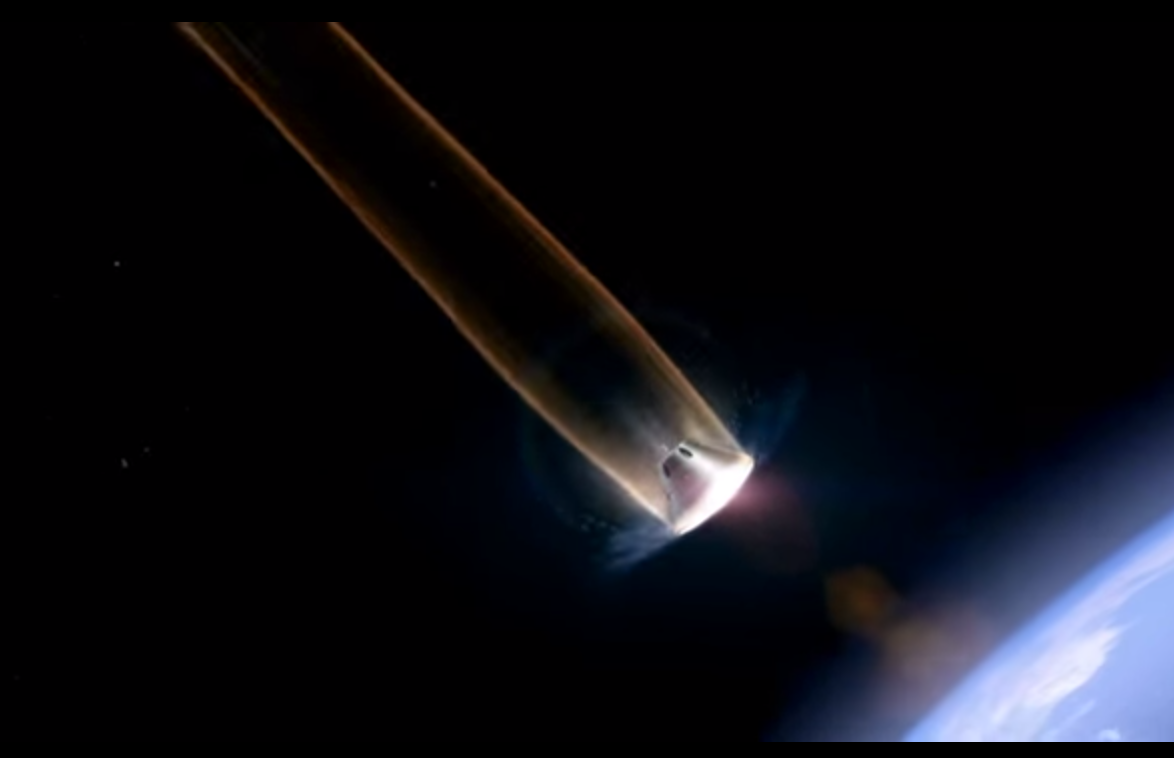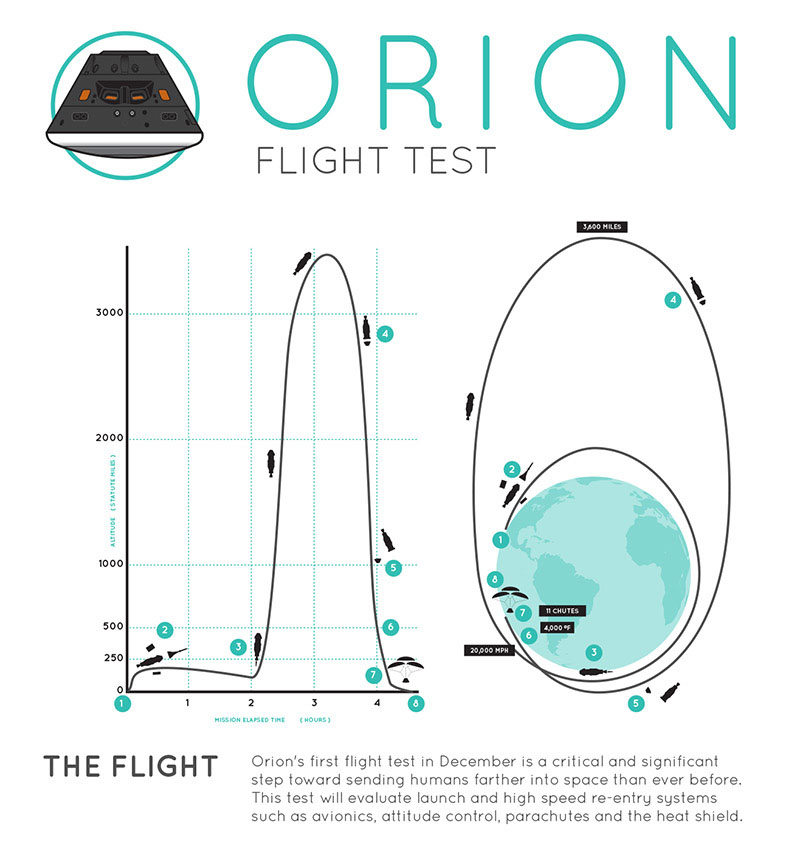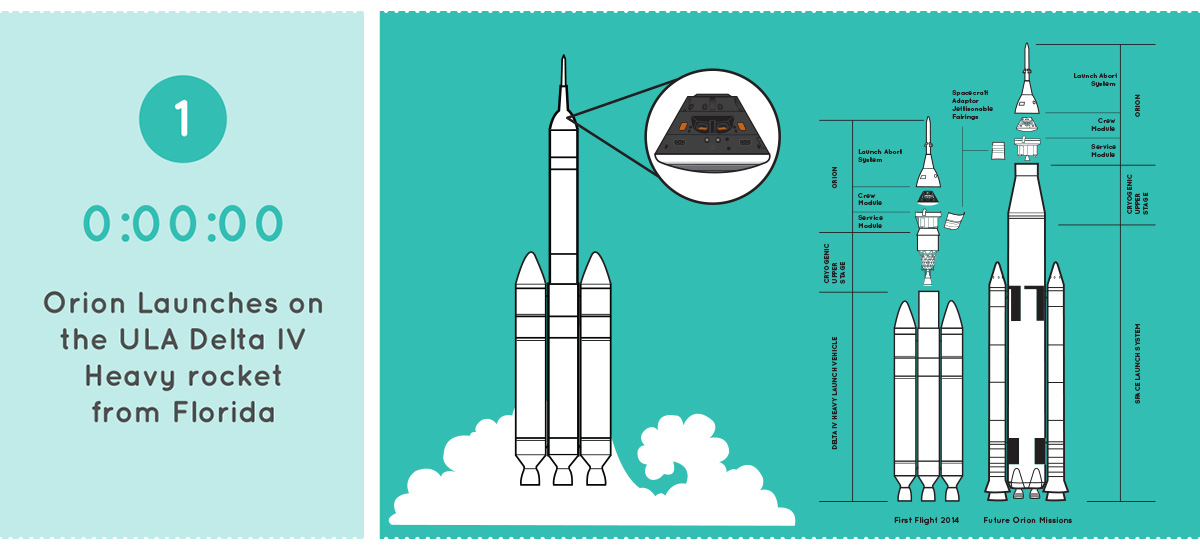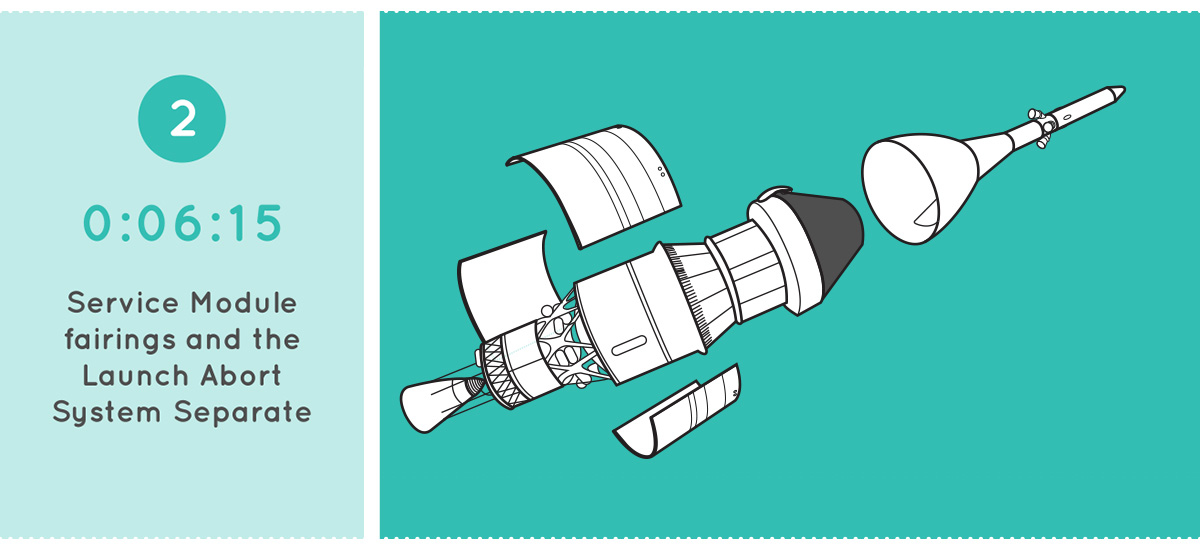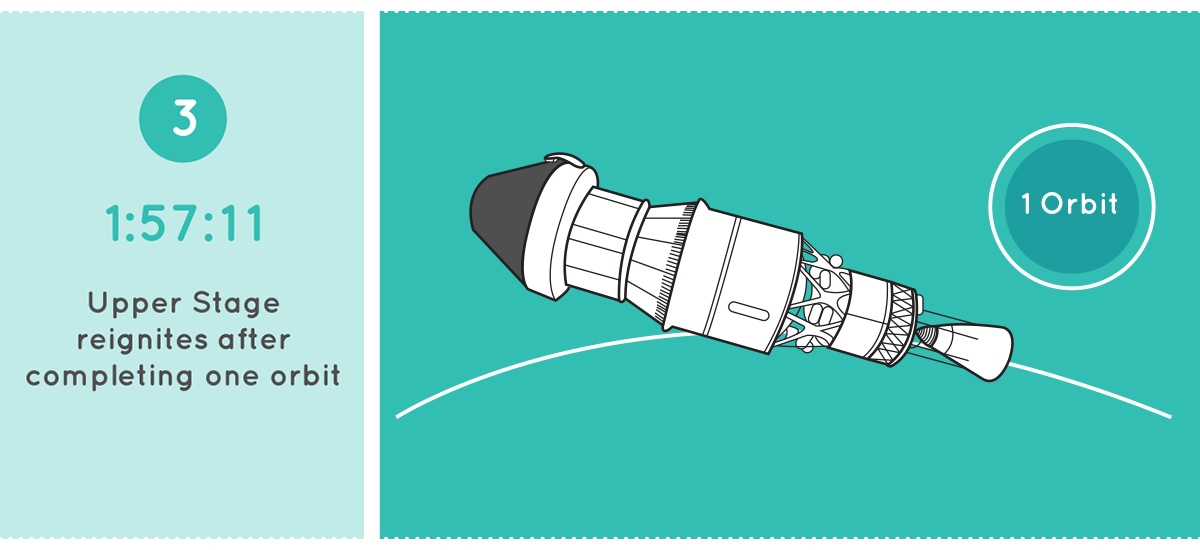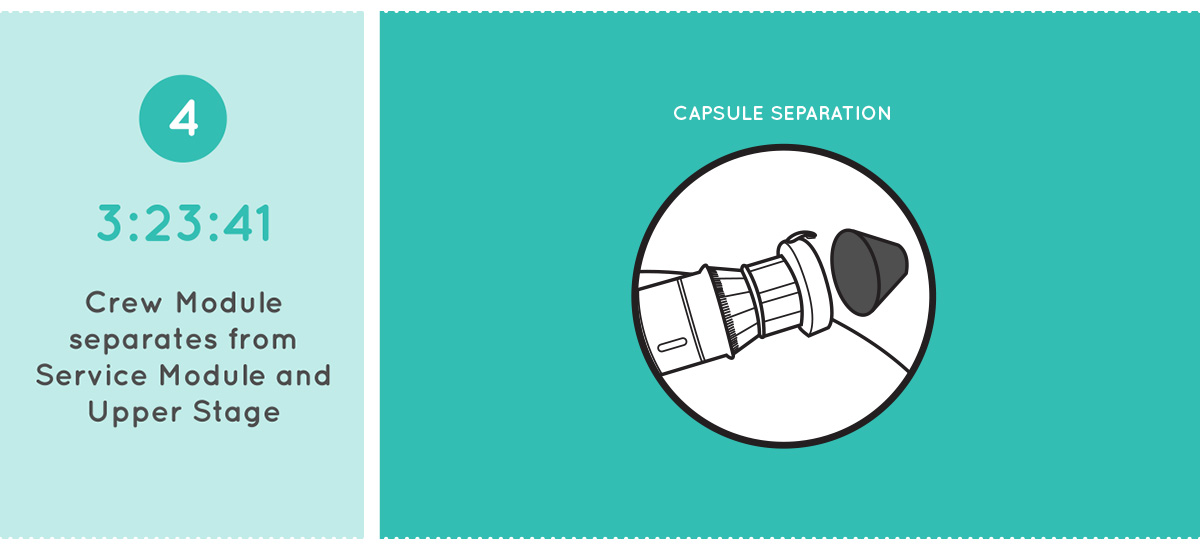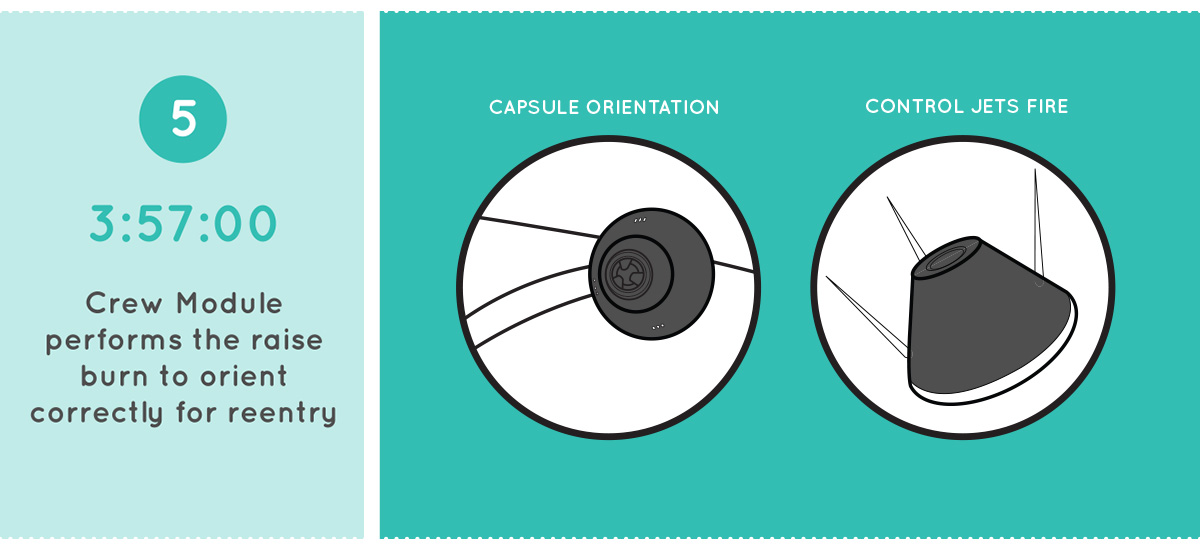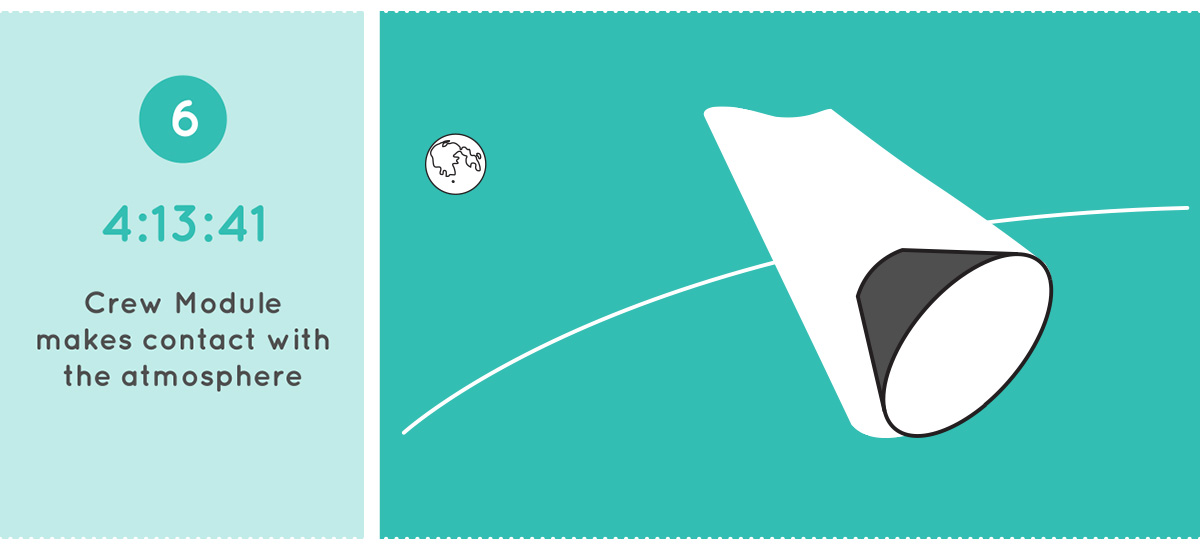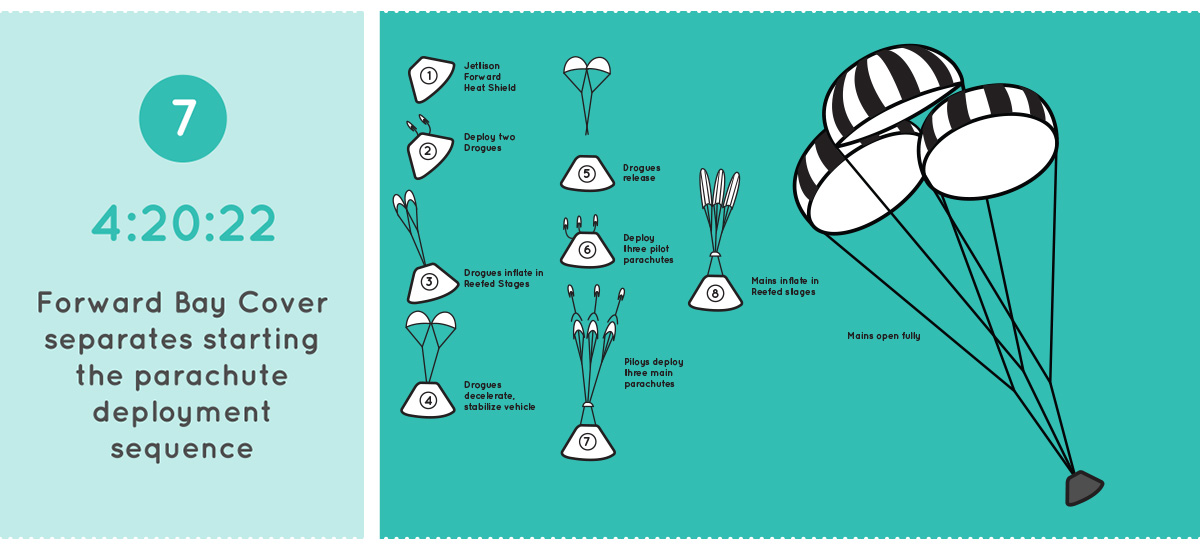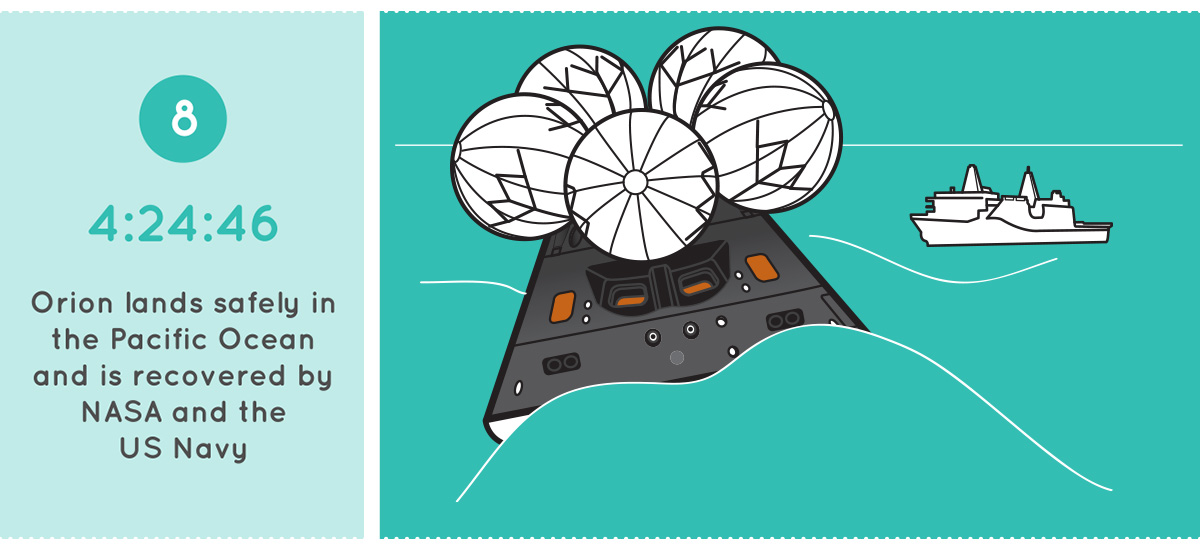Photos: Step-by-Step Guide to NASA's EFT-1 Orion Spacecraft Test Flight
Orion Re-Entry
NASA's Exploration Flight Test 1, or EFT-1, will mark the first-ever test flight of the agency's Orion spacecraft for deep-space exploration. The unmanned test flight, scheduled for Dec. 4, 2014, will send an unmanned Orion space capsule on a 4.5-hour spaceflight to simulate the re-entry of a mission to the moon. See how NASA's Orion EFT-1 space capsule test flight will work in this step-by-step guide from the U.S. space agency.
Testing a New Spacecraft
NASA scheduled the Orion capsule's first test flight for Dec. 4, 2014. The uncrewed spacecraft will travel to a height of 3,600 miles (5,800 km) and orbit Earth twice during a 4.5 hour mission
How It Works
NASA's first Orion spacecraft will fly to a distance of 3,600 miles (5,800 kilometers) in space in order to test its heat shield and resistance to radiation. See how NASA's EFT-1 Orion spacecraft test flight works in this Space.com infographic.
Step 1: Launch
Orion will lift off into space atop a United Launch Alliance Delta IV Heavy rocket from Cape Canaveral Air Force Station in Florida.
Step 2: Fairing/Escape Tower Separation
Protective fairings and the Launch Abort System both separate from the service module.
Step 3: Upper Stage Reignition
After the first orbit of Earth, the upper stage ignites to propel Orion capsule to an altitude of 3,600 miles.
Step 4: Orion Capsule Separation
The service module and upper stage separate from the Orion crew capsule.
Breaking space news, the latest updates on rocket launches, skywatching events and more!
Step 5: Ready for Re-entry
Orion crew module fires its control jets to orient itself for reentry.
Step 6: Return to Earth
Orion makes contact Earth's atmosphere at almost 20,000 mph and friction raises the capsule's heat shield temperature to near 4,000 degrees F.
Step 7: Parachute Descent
Orion slows to 300 mph due to air friction, but still requires parachutes to slow the speed to 20 mph for splashdown.
Step 8: Ocean Splashdown
Orion capsule will splashdown in the Pacific Ocean near the coast of Baja California. The United States Navy will assist with recovery.

Space.com is the premier source of space exploration, innovation and astronomy news, chronicling (and celebrating) humanity's ongoing expansion across the final frontier. Originally founded in 1999, Space.com is, and always has been, the passion of writers and editors who are space fans and also trained journalists. Our current news team consists of Editor-in-Chief Tariq Malik; Editor Hanneke Weitering, Senior Space Writer Mike Wall; Senior Writer Meghan Bartels; Senior Writer Chelsea Gohd, Senior Writer Tereza Pultarova and Staff Writer Alexander Cox, focusing on e-commerce. Senior Producer Steve Spaleta oversees our space videos, with Diana Whitcroft as our Social Media Editor.
